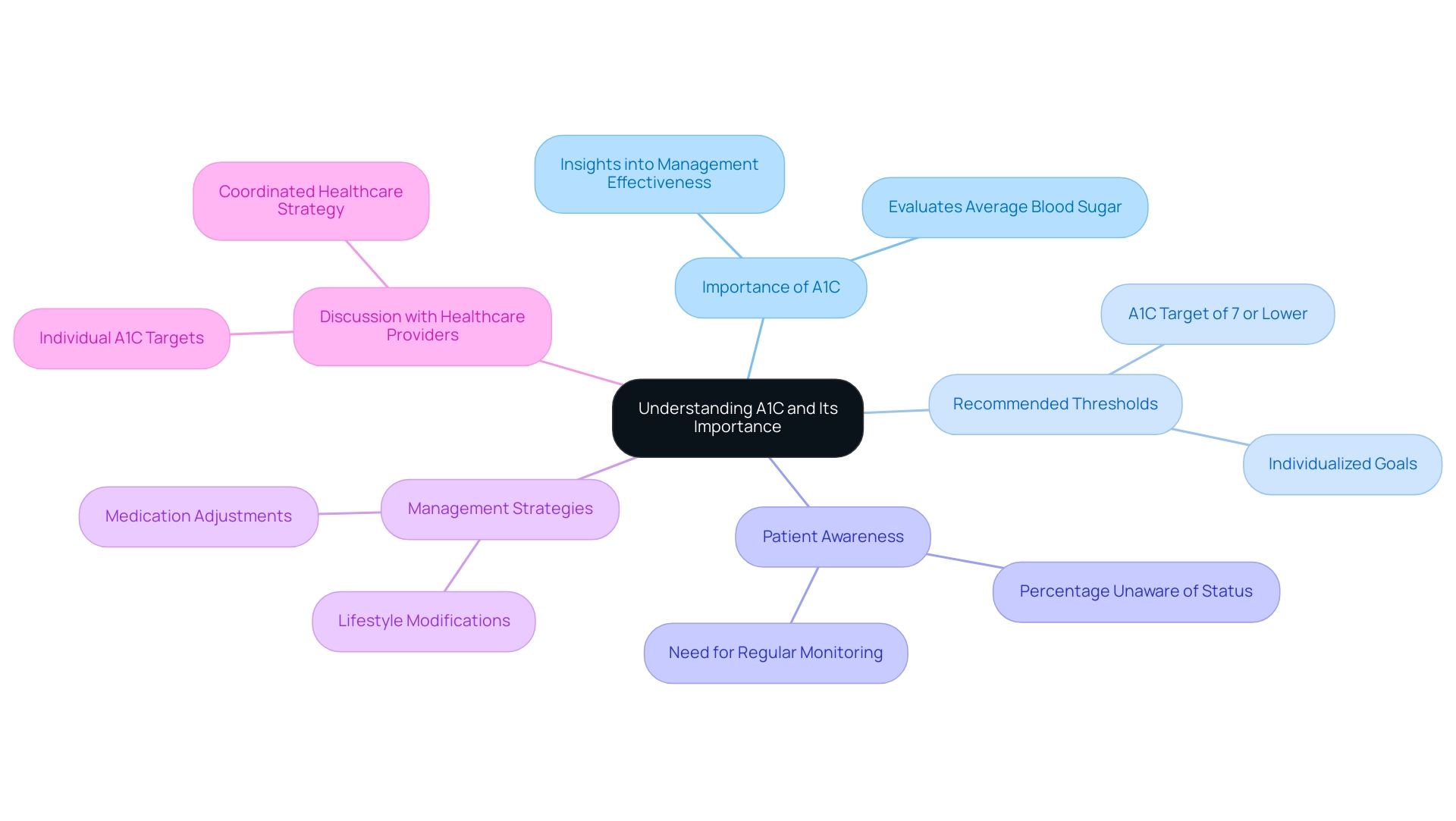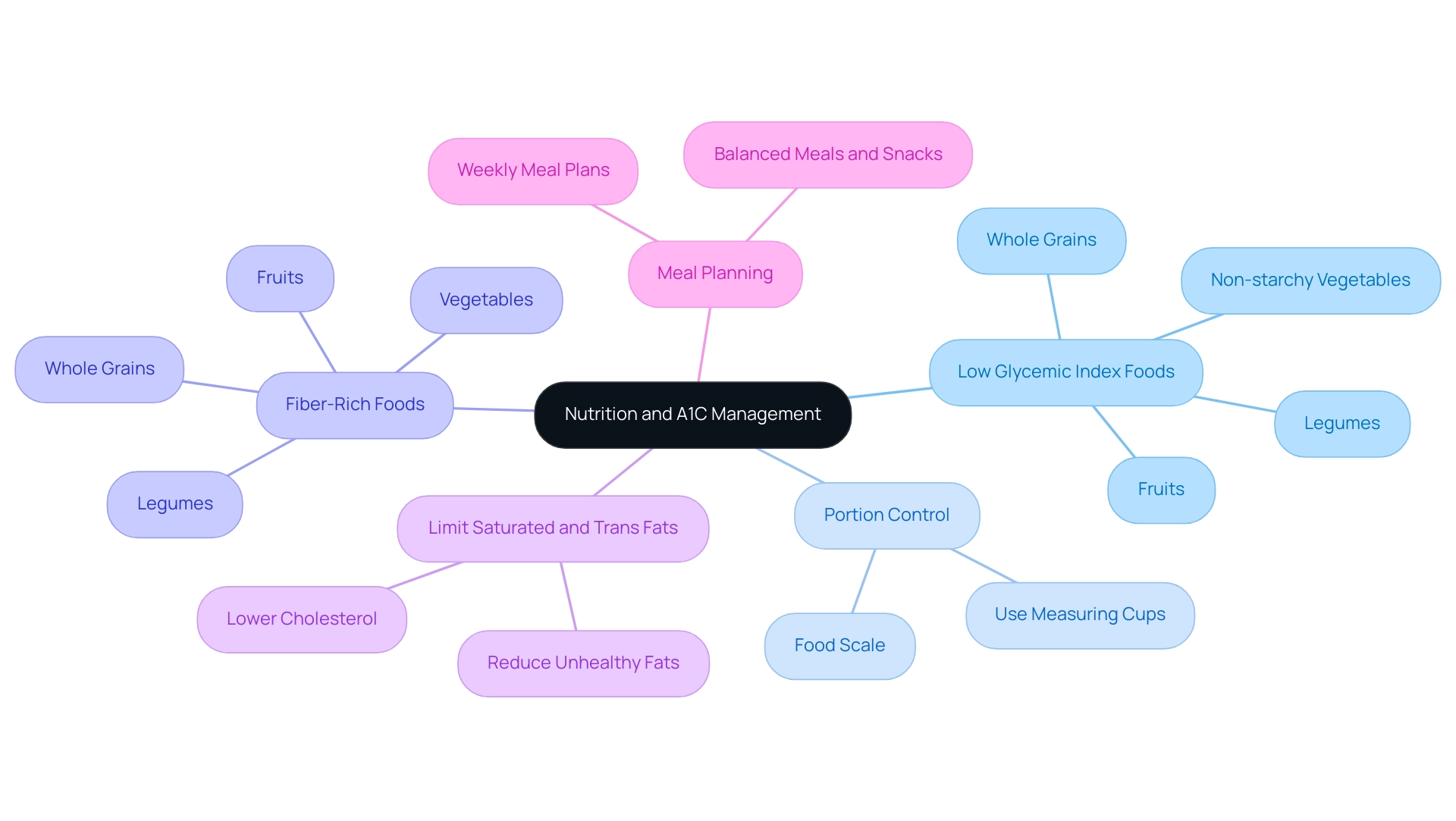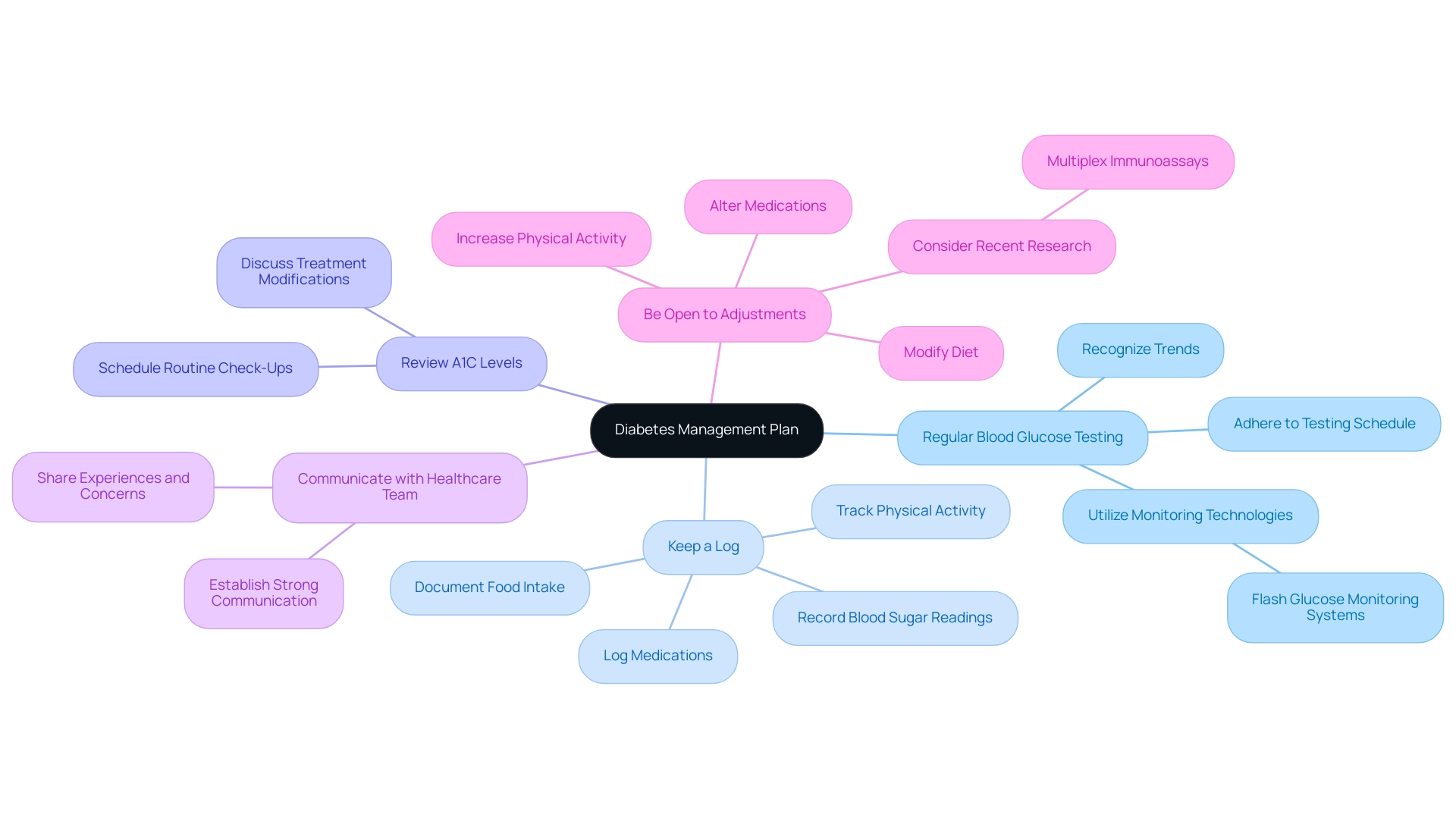Overview:
To achieve an A1C of 7, diabetics should implement strategies such as regular glucose monitoring, adopting a balanced diet, engaging in physical activity, adhering to medication regimens, managing stress, staying hydrated, and scheduling regular check-ups. The article provides detailed guidance on each strategy, emphasizing their importance in effectively managing blood sugar levels and reducing the risk of diabetes-related complications, thereby supporting the goal of reaching the A1C target.
Introduction
In the realm of diabetes management, understanding A1C levels is paramount for individuals striving to maintain optimal health. The A1C test serves as a critical indicator of average blood glucose levels over the preceding months, guiding both patients and healthcare providers in assessing the effectiveness of management strategies.
With a recommended target of 7% or lower for most adults, awareness of A1C levels becomes essential, especially considering that many individuals remain undiagnosed. This article delves into the significance of A1C, effective strategies for achieving and maintaining target levels, and the vital role of nutrition and physical activity in this ongoing journey.
By exploring these key components, individuals can empower themselves to make informed decisions that enhance their overall well-being and mitigate the risks associated with diabetes.
Understanding A1C: What It Is and Why It Matters
The A1C test is an essential diagnostic instrument that evaluates average blood sugar concentrations over the past two to three months, providing important insights into the effectiveness of management strategies for the condition. For most adults with the condition, it is typically advised that the A1C is 7 or lower, as this threshold is associated with a decreased risk of complications related to the illness. It's crucial to recognize that a bit over one-quarter of adults with the condition are unaware of their status, emphasizing the need for regular monitoring and awareness of A1C values.
Additionally, fasting and carbohydrate restriction can falsely elevate glucose readings during an oral glucose challenge, which is vital for patients to understand when interpreting their results. At&T Solutions, we are dedicated to enabling patients in their health journey by offering resources and assistance for comprehending A1C values. This knowledge facilitates informed decisions regarding lifestyle modifications, medication adjustments, and the regular monitoring of blood glucose levels.
We encourage discussions with healthcare providers about individual A1C targets, as these goals can differ based on unique health factors and personal circumstances. For instance, a post hoc analysis of the HAPO cohort showed that children of mothers diagnosed with gestational glucose intolerance via the one-step method had higher risks of abnormal glucose metabolism and increased body fat, underscoring the broader implications of A1C management for future generations. Chuck Henderson, the chief executive officer of the American Diabetes Association, highlights the essential nature of these discussions, stating, 'At the ADA, we are focused on enhancing the quality of care for anyone who lives with this condition, prediabetes, or who is at risk of developing it.'
This highlights the necessity of a well-informed and coordinated healthcare strategy in managing the condition effectively. Discover T2 Solutions for additional details on handling blood sugar and comprehending A1C measurements.

Effective Strategies to Achieve an A1C of 7
To achieve an A1C of 7, it is essential to implement the following strategies, all of which are supported by T2 Solutions, your comprehensive resource for Type 2 and Type 3 diabetes management:
-
Monitor Glucose Regularly: Consistent tracking of glucose readings is essential in comprehending how food, exercise, and medications influence your body. Utilizing a glucose meter or a continuous glucose monitor allows you to maintain awareness of your levels, enabling timely adjustments to your control plan. T2DSolutions provides access to educational resources and tools to help you monitor your sugar levels effectively. Significantly, the positive predictive value of utilizing ICD-9 and ICD-10 codes to identify individuals with type 1 mellitus is 96.5%, emphasizing the necessity of precise monitoring in disease oversight.
-
Adopt a Balanced Diet: Emphasize a diet rich in whole foods, encompassing a variety of vegetables, lean proteins, whole grains, and healthy fats. Reducing the intake of processed foods, sugary drinks, and high-carb snacks is vital. For tailored dietary advice, consider consulting a registered dietitian available through T2DSolutions, who can assist with personalized meal planning.
-
Engage in Regular Physical Activity: Striving for at least 150 minutes of moderate-intensity aerobic exercise weekly, coupled with strength training sessions at least twice a week, can significantly enhance insulin sensitivity and help lower blood sugar levels. T2DSolutions provides access to exercise programs and resources to help you incorporate physical activity into your daily routine effectively.
-
Adhere to Medication Regimens: Taking prescribed diabetes medications consistently is crucial for effective control. If you have any concerns regarding your medications or encounter side effects, it is important to communicate these issues with your healthcare provider to explore appropriate adjustments. T2DSolutions can link you with healthcare experts who can offer advice on medication oversight.
-
Manage Stress: Chronic stress can adversely influence sugar control. Integrating stress-reduction techniques into your daily life—such as mindfulness practices, meditation, yoga, or deep-breathing exercises—can help mitigate its impact on your health. T2DSolutions provides workshops and resources centered on stress control techniques.
-
Stay Hydrated: Maintaining adequate hydration is important for optimal health and can assist in sugar regulation. Aim to drink plenty of water throughout the day to support your overall well-being.
-
Schedule Regular Check-Ups: Consistent visits to your healthcare provider are essential for assessing your health control plan. These appointments allow for medication adjustments if necessary and provide opportunities to address any health concerns. T2DSolutions can help you find healthcare providers and schedule these important check-ups.
The importance of self-monitoring is further illustrated by a case study titled "Self-Monitoring of Blood Glucose in Tayside Residents," which revealed significant patterns in the uptake of blood glucose monitoring strips among diverse demographic groups. This emphasizes the different degrees of self-regulation and its effect on blood sugar control.
By adopting these strategies and utilizing the resources provided by T2 Solutions, you enhance your potential to achieve and sustain that A1C of 7, thereby improving your overall health and minimizing the risk of diabetes-related complications. As highlighted by specialists in the area, reaching an A1C of 7 is an essential objective in controlling blood sugar levels, and consistent monitoring is vital to ensure that A1C is 7. T2 Solutions is here to support you every step of the way on your journey to better health.

The Role of Nutrition in Managing A1C Levels
At T2DSolutions, we recognize that nutrition plays a critical role in the effective management of this condition and in achieving that the A1C is 7. As we launch T2DSolutions as a comprehensive resource hub for Type 2 and Type 3 diabetes education and community support, we highlight the importance of dietary modifications. Our platform will provide access to a wealth of educational materials, resources, and community support to empower newly diagnosed patients in their journey.
A study by Visek et al. with a sample size of 20 participants illustrates how dietary changes can significantly influence sugar control. The following dietary guidelines are essential for newly diagnosed patients navigating this condition:
- Opt for Low Glycemic Index Foods: Select foods with a low glycemic index (GI), as they elevate blood sugar levels more gradually compared to high GI options. Favor choices such as whole grains, legumes, non-starchy vegetables, and most fruits to promote stable glucose. As mentioned by Lauren Gellar, author and advocate, "the current American Diabetes Association's (ADA) dietary recommendations for T1D concentrate on counting carbohydrates and aligning insulin doses to the grams of carbohydrate ingested to imitate normal pancreatic function and attain nearly normal glucose (BG) readings."
- Practice Portion Control: Be attentive to portion sizes to prevent overeating, which can lead to unexpected spikes in sugar levels. Utilizing measuring cups or a food scale can assist in maintaining appropriate portion sizes.
- Incorporate Fiber-Rich Foods: Integrate high-fiber foods—such as vegetables, fruits, whole grains, and legumes—into your diet. These foods are recognized to assist in stabilizing glucose concentrations and improving digestive health.
- Limit Saturated and Trans Fats: Aiming to reduce the intake of unhealthy fats is crucial for lowering cholesterol amounts and minimizing the risk of heart disease, a significant concern for those with diabetes.
- Plan Meals in Advance: Creating a meal plan ahead of time can facilitate healthier food choices and reduce the likelihood of impulsive eating behaviors. Design a weekly meal plan that encompasses balanced meals and snacks.
Furthermore, case studies on low-GI diets suggest possible advantages, as shown by five studies assessing the impacts of low-GI/GL diets on pressure among participants with Type 2 Diabetes Mellitus (T2DM). While some studies did not find significant effects, trends suggested that low-GI diets may positively influence blood pressure, highlighting the importance of dietary choices.
By prioritizing these nutritional strategies and utilizing the resources available at T2 Solutions, individuals can make a substantial positive impact on their overall health, potentially achieving an A1C of 7.

The Importance of Physical Activity
At T 2 Solutions, we are excited to introduce a new resource hub dedicated to health education and community support. Physical activity plays a crucial role in managing blood sugar levels effectively. Here are several benefits and practical tips for incorporating exercise into your daily routine:
-
Benefits of Regular Exercise: Engaging in consistent physical activity significantly reduces glucose concentrations, enhances insulin sensitivity, and decreases the risk of cardiovascular disease. In a recent study, fasting blood glucose levels were assessed before and after a 12-week exercise training program, demonstrating the positive effect of exercise on blood sugar control. Regular exercise also supports weight management and contributes to improved mental well-being, which is particularly important given the high association between complications related to blood sugar issues and depression.
-
Types of Exercise: A well-rounded exercise regimen should include both aerobic activities—such as walking, cycling, or swimming—and strength training exercises, which can be performed using weights or resistance bands. This combination enhances health advantages and boosts overall fitness.
-
Tailoring Exercise Programs: Acknowledging that there are significant sex differences in cardiorespiratory fitness and exercise response among individuals with blood sugar issues is essential. Tailoring exercise programs to meet these unique needs can lead to better outcomes. For instance, the case study titled 'Sex Differences in Exercise and Diabetes' highlights how understanding these differences can enhance the effectiveness of exercise interventions.
-
Set Realistic Goals: Begin with small, manageable goals, such as walking for 10 minutes each day, and progressively increase the duration and intensity of your workouts. This gradual approach helps to establish a sustainable routine that can lead to long-term adherence.
-
Find Activities You Enjoy: Selecting enjoyable exercises is vital for increasing adherence. Consider joining a fitness class, participating in community interventions, or working out with a friend to enhance motivation.
-
Stay Consistent: Aim for a minimum of 150 minutes of moderate-intensity aerobic activity each week, complemented by strength training on two non-consecutive days.
As Blackman MR stated, 'Endotext [Internet]. Incorporating physical activity into your daily life not only aids in managing A1C levels, potentially achieving A1C of 7, but also fosters overall health improvements. Recent studies underscore the importance of tailoring exercise programs to meet the unique needs of individuals, taking into account factors such as sex differences in exercise response. By making these adjustments, individuals can optimize their exercise routines for better health outcomes, reinforcing the latest recommendations in managing blood sugar. For additional details and resources, subscribe to T2D Solutions and remain informed about the latest in blood sugar control.

Monitoring and Adjusting Your Diabetes Management Plan
Monitoring progress is crucial to achieving and maintaining that A1C is 7. At T2 Solutions, we are committed to offering valuable resources and assistance for individuals handling their condition. Implementing the following key practices can enhance your condition management:
- Regular Blood Glucose Testing: Adhere to the testing schedule recommended by your healthcare provider. Routine glucose monitoring allows you to recognize trends in your readings and comprehend how different elements, like diet and stress, affect these measurements. Recent advancements in monitoring technologies, such as flash glucose monitoring systems, have been demonstrated to be cost-effective for patients with Type 1 conditions, emphasizing the significance of regular testing.
- Keep a Log: It is essential to maintain a comprehensive log of your blood sugar readings, food intake, amounts of physical activity, and medications. This detailed record serves as a valuable tool for both you and your healthcare team, facilitating informed decisions regarding your care plan.
- Review A1C Levels: Schedule routine check-ups with your healthcare provider to ensure that A1C is 7. This will enable you to talk about any required modifications to your treatment strategy based on your personal outcomes and lifestyle changes.
- Communicate with Your Healthcare Team: Establish a strong line of communication with your healthcare provider, dietitian, and health educator. Consistently share your experiences, concerns, and any challenges you encounter; their guidance will be instrumental in navigating your strategy effectively.
- Be Open to Adjustments: Flexibility in your plan is vital. Be prepared to make adjustments based on monitoring results, which may involve modifying your diet, increasing physical activity, or altering medications to better align with your goals if your A1C is 7. For instance, recent studies on multiplex immunoassays indicate potential advancements in sensitivity and specificity for monitoring blood glucose, which could influence how adjustments are made.
By actively monitoring your health management plan and considering the latest advancements in technology and research, you empower yourself to make informed adjustments that can lead to improved control of your A1C levels, particularly when your A1C is 7. For more resources and support, visit T2 Solutions, your comprehensive hub for Type 2 and Type 3 diabetes education.

Conclusion
Understanding and managing A1C levels is crucial for individuals with diabetes, as it directly correlates with health outcomes and the risk of complications. The A1C test provides a snapshot of average blood glucose levels over the previous months, making it an essential tool for both patients and healthcare providers. Maintaining an A1C level of 7% or lower is a widely recommended target that can significantly reduce the likelihood of diabetes-related health issues.
The article highlights effective strategies for achieving this goal, including:
- Regular blood sugar monitoring
- Adopting a balanced diet
- Engaging in consistent physical activity
- Adhering to medication regimens
- Managing stress
- Staying hydrated
- Scheduling regular check-ups
Each of these elements plays a vital role in not only reaching but also sustaining optimal A1C levels. The importance of personalized approaches, such as working closely with healthcare professionals and utilizing available resources, cannot be overstated.
In conclusion, individuals living with diabetes are encouraged to take an active role in their health management journey. By implementing the strategies discussed and leveraging the support from resources like T2DSolutions, it is possible to enhance overall well-being and effectively manage A1C levels. Taking informed steps today can lead to a healthier tomorrow, minimizing the risks associated with diabetes and improving quality of life.



